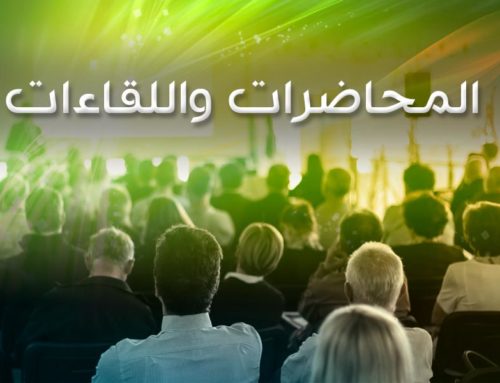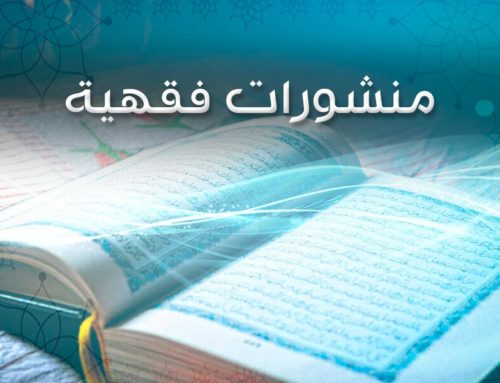Pluralism in marriage (Polygamy) التعددية في النكاح
Pluralism in marriage (Polygamy)
The Provident Creator created the universe as double-edged dual mates (pairs), and made that a fixed law. The Almighty said:{And of all things we created two mates, that you may remember}, [Athariyat: 49], where the word (mates) does not denote two of the same type, that is: a male and a male, but rather it denotes a male and a female, each of them is a mate of the other from creation. Actually, it means that there is a relationship of compatibility, integrity and harmony between them, while there is no relationship of integration between two of the same gender, and therefore, it is not correct to call them “mates”, but rather they are merely two.
Man is a species implying mates of the male and the female, and every male is a mate for a female in initial creation, and vice versa, every female is a mate for a male from creation. The Divine law came down to organize this relationship consciously, that is, it did not come down to grant legalization fot its practice, because that is instinctive and does not need permission. It is exactly as eating and drinking that need only organizing.
Whatever the Legislator wants to forbid or prohibit He states it plainly. Hence the scholars say: The permissible is absolute while the prohibited is restricted.
So, the Legislator prohibited the incestuous marriage and a group of women, such as one’s own son’s wife, the married woman, the stepmother … etc. and He mentioned them in detail. As for what the Legislator said nothing about, it goes back to the essential law i.e. it is permissible.
So, the marriage of a man with one woman needs no legislation, because that is a basic and indisputable principle in human relations; however, it needs to regulate and control the relationship between them in relation to rights and duties.
As for the idea of polygamy, it may be dealt with according to the actual facts, where the man is like the nucleus of the atom and the women are like the multiple electrons that revolve around the nucleus in a sort of connection with it. He may also be depicted as the center of the circle in its relationship to the group of circumferential points in way of holding together and connection, just as the atom and the circle have a center each, around which electrons and peripheral points revolve.
Likewise, in the social cell represented by the family, it may be consist of a single center represented by the man with which many women are attached. Basically, that is a realistic, scientific idea consistent with the system of the universe.
The concept of marriage itself is a form of bilateral pluralism in relationships, it is not the end. Determining and organizing such a relationship is left to the social system of human community as concerns permission, prohibition or restriction. And since the idea of pluralism in marrying women is both scientific and realistic, there is no legislation that consecrates them, but rather it leaves them to the original principle: (All) things are initially permissible. Legislation, as a matter of fact, set a maximal limitation of four women to polygamy, and it addressed the widows and divorced women in order to restore the social cell and re-activate it.
Almighty God says:
{And if you fear that you will not deal justly with the orphans, then marry those that please you of women, two or three or four. But if you fear that you will not be just, then [marry only] one or those you own through what is agreed upon by contracts and agreements. That is more suitable that you may not incline [to injustice]} [Women: 3].
Ladies and gentlemen,
Note that the text speaks of orphans and taking care of them, as the focal point of the text is caring for orphans, rather than what is commonly taken for as the permissibility of multiple marriage by separating the phrase: {then marry those that please you of women, two or three or four} from the context to consider it separately and use it contrarily to what the Legislator meant by it. This amputation, in which many researchers and jurists are involved, is like the one who takes the Almighty’s saying: {Woe to those who pray ..} [Al-Ma’un: 4] or his saying: {… Do not approach the prayer …} [Women: 43]. These are statements wrongly cut off their due contexts.
Hence, the statements have to be restored to their due positions in the text, understood within their overall context, and projected to the focal point of discourse from reality so that the divine intents of legislation could be realized for the benefit of people, the goodness of society, and its renaissance.
Hence, the realization of the individual’s desire and benefit depends on the interest and consistency of society. That is why guidance came to the individual who wants to marry more than one, that his marriage be with the mother of orphans, where he meets his desire, obtains his benefit, and at the same time restores a social cell that lost its position represented by the father. In fact, he makes himself the center of the social cell, the father of the orphans, and the husband of their mother. Thus, the symbiosis and consolidation between the interest of the individual and the interest of society is done in a completely consistent manner.
That is why the text begins with the Almighty saying:
{And if you fear that you will not deal justly with the orphans,} meaning: If you feel that you can take responsibility of caring for orphans with their mother permanently and inseparably, the answer of the condition comes as: {then marry those that please you of women, two or three or four}, i.e. restoring all the social cells that you have and provided that they shouldn’t exceed four cells, since that would be a huge responsibility that the individual would be unable to meet their requirements.
For that reason, the text proceeded with another requirement, which is: {But if you fear that you will not be just, then [marry only] one or those you own through what is agreed upon by contracts and agreements. That is more suitable that you may not impoverish/incline [to injustice]}, i.e. if you know that you will find it difficult to be fair regarding the orphans from different mothers; because justice among women is impossible {And you will never be able to be fair/just between wives, even if you strive [to do so]} [Nisaa:129]. In that case, have only one cell to care for and restore; that would be more likely for you not to fall into poverty and inability, while losing the first social cell: your children’s mother.
As a matter of fact, the text mentioned the word (women) rather the than (the orphans’ mothers) because as a concept “women” includes the mothers of orphans. In addition, it introduced another rule which is the permission for a man of multiple marriages with women in general, without urging on the part of the Legislator to do so. Whereas, if the word was “orphans’ mothers”, it would have confined the rule to them only; On the other hand, the word “طاب” does not indicate desire or pleasure, and that is why we say: “طاب الطعام”, and “طاب المريض” and we call the one who treats the patients and restores their adaptation to their body system “doctor”. In that case, the expression “ما طاب لكم” means what is suitable/good for you and achieves harmony and adaptation.
The divine text came to organize the highest limit of pluralism in marriage and directed it teaching and encouraging so that this pluralism be beneficial to society. Indeed, the social cells that lost their central component – the father – have the most priority of rebuilding and restoration. Taking that objective into consideration, all women suffering from a social problem due to divorce, displacement, or loss of family as a result of wars, natural disasters, and the like, are dealt with in the light of the Divine regulation mentioned above. They are preferential and of top priority in polygamous marriage.
As for polygamy for mere enjoyment, the Legislator said nothing about it, nor did He encourage for that, as it is permissible according to the original rule stating that things are permissible unless the contrary is stated. Permissibility, in turn, is not applied except with certain conditions, where its highest limit is discerned from the same text as being only four women since “مثنى وثلاث ورباع” denotes “حال” meaning “adverbial phrase of manner”, rather than “تمييز” which means “distinction” . That is, those words don’t denote the “count” and consequently it cannot be said that they are added up to claim that it is permissible to marry nine women, or that the number is open/unlimited, as some say. That is just like when we say: people came in as duo’s, triplets or quartets.
The regulation of the permissible practice is left to the social system, and it is up to the society according to what it sees as beneficial for it either prohibiting or permitting it. The social system is fully free provided that it should not go beyond the limits of (Sharia) i.e. Legislation.
As a result, polygamy, that is marriage with more than one woman, is not a basis for the marital relationship, as is seen in social reality, but rather it is an emergency and circumstantial treatment in societies. Hence, it is not necessary for men to put it into practice nor should women accept it because it is a legal regulation for those who want to volunteer in that good action to guarantee the orphans and care for them and their mother provided that they maintain their first family from breakdown and harm. Finally, a society, in addition, can establish social centers to care for orphans and their mothers.







اضف تعليقا